I'm discovering issues on attempting to start image slideshow on my app after launching splash screen. For some reason the image slideshow takes too long to start I had to click either previous button or next button or my UISlider to display slideshow then the app crashes. Is there something wrong or missing in my code? The goal is to start image slideshow automatically. Here is my code below. Also, I have a screenshot of how my image slideshow setup in the link below.

var Array = [UIImage]()
var counter = 2
var time = Timer()
@IBOutlet weak var menuButton: UIBarButtonItem!
@IBOutlet weak var ImageView: UIImageView!
@IBOutlet weak var Slider1: UISlider!
@IBAction func Slider(_ sender: UISlider) {
_ = 0
let value = Int(sender.value)
ImageView.image = Array[value]
}
@IBAction func NextButton(_ sender: Any) {
Slider1.value += 1
ImageView.image = Array[Int(Slider1.value)]
self.ImageView.animationImages = self.Array
self.ImageView.animationDuration = 3.0
self.ImageView.animationRepeatCount = 0
self.ImageView.startAnimating()
UIView.transition(with: self.ImageView, duration: 5.0, options: .transitionCrossDissolve, animations: {self.ImageView.image = self.ImageView.image}, completion: nil)
}
@IBAction func PrevButton(_ sender: Any) {
Slider1.value -= 1
ImageView.image = Array[Int(Slider1.value)]
self.ImageView.animationImages = self.Array
self.ImageView.animationDuration = 3.0
self.ImageView.animationRepeatCount = 0
self.ImageView.startAnimating()
UIView.transition(with: self.ImageView, duration: 5.0, options: .transitionCrossDissolve, animations: {self.ImageView.image = self.ImageView.image}, completion: nil)
}
//Set Status Bar to light content (white)
override var preferredStatusBarStyle : UIStatusBarStyle {
return .lightContent
}
override func viewDidLoad() {
//Set Navigation Bar color Example Home, Back button
self.navigationItem.backBarButtonItem?.tintColor = UIColor.white;
time = Timer.scheduledTimer(timeInterval: 5,
target: self,
selector: #selector(getter: self.Slider1),
userInfo: nil,
repeats: true)
super.viewDidLoad()
setup()
Array = [#imageLiteral(resourceName: "MainImage1.jpg"), #imageLiteral(resourceName: "MainImage2.jpg"), #imageLiteral(resourceName: "MainPage3.jpg"), #imageLiteral(resourceName: "MainImage4.jpg"), #imageLiteral(resourceName: "MainImage5.jpg"), #imageLiteral(resourceName: "MainImage6.jpg"), #imageLiteral(resourceName: "MainImage7.jpg"), #imageLiteral(resourceName: "MainImage8.jpg")]
sideMenus()
// Do any additional setup after loading the view.
}
override func didReceiveMemoryWarning() {
super.didReceiveMemoryWarning()
// Dispose of any resources that can be recreated.
}
func setup(){
self.navigationController?.navigationBar.tintColor = UIColor.white
}
override var prefersStatusBarHidden: Bool{
return false
}
var navigationBarAppearace = UINavigationBar.appearance()
override func viewDidAppear(_ animated: Bool){
}
func sideMenus() {
if revealViewController() != nil {
menuButton.target = revealViewController()
menuButton.action = #selector(SWRevealViewController.revealToggle(_:))
revealViewController().rearViewRevealWidth = 275
revealViewController().rightViewRevealWidth = 160
view.addGestureRecognizer(self.revealViewController().panGestureRecognizer())
}
}
}`